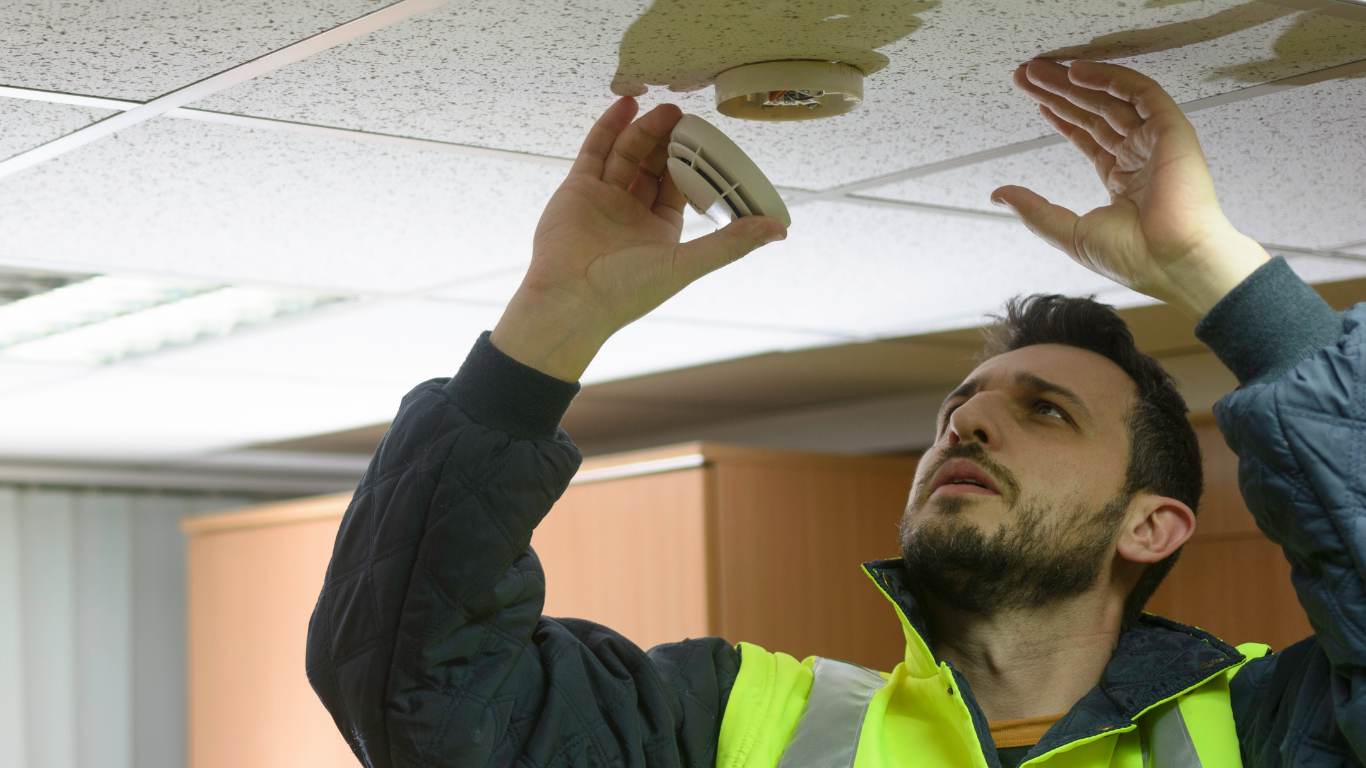
UK fire alarm regulations state all business premises are required to have “an appropriate fire detection system.” This makes sure all fire events can be identified quickly, and individuals inside the building can be quickly alerted. Commercial fire alarm systems are your first step in protecting employees and business property from fire hazards. We supply and install commercial fire alarms, commercial smoke detectors, commercial carbon monoxide (Co2) detectors, and commercial heat detectors for businesses in Glasgow.





Situated in the heart of Glasgow, we are dedicated to ensuring the safety and security of your Glasgow business through our approved smoke detectors and commercial fire alarm systems.
Our fully trained fire safety team is dedicated to delivering a commercial fire alarm installation to your Glasgow business that will ensure your property and occupants are safe and alerted in the event of any fire hazards. Get in touch today for a free, no-obligation quote and guarantee the safety of your Glasgow company.
“An appropriate fire detection system” is needed in the place of business, according to UK fire alarm regulations.
A commercial fire alarm system can help protect business assets such as inventory and equipment from fire damage.
Early detection ensures occupants have the maximum amount of time to evacuate a building safely in case of fire.
We perform commercial fire alarm installations for Edinburgh and Glasgow businesses, with a wide range of fire alarm types to choose from:





Commercial fire alarms, smoke detectors, and carbon monoxide (Co2) detectors are designed to detect fires early in their development, allowing for the safe evacuation of occupants and minimising damage to your Glasgow property. These systems can vary in complexity based on the size and type of the building, as well as the specific needs of the occupants. Here are the primary types of commercial fire alarm systems we can install to your property:
These systems utilise physical cables to connect fire alarm components. They are reliable due to direct connections and ideal for commercial buildings under construction or undergoing major renovations.
Wireless fire alarm systems utilise radio frequency signals to link fire detectors and alarms, offering a flexible and minimally invasive solution. Ideal for existing buildings, these systems are easy to install and reconfigure, making them cost-effective and reliable for fire detection at your Glasgow location.
A combination of wired and wireless components, hybrid fire alarm systems offer flexibility in your commercial fire alarm installation and expansion. They can be tailored to specific building needs, leveraging the strengths of both systems.
Addressable fire alarm systems are typically used in larger commercial buildings or commercial real estate complexes for precise monitoring. Each device has a unique address, allowing pinpoint identification of activated components. This enables faster response to incidents and easier maintenance.
Non-addressable fire alarm systems are simpler and more cost-effective but less precise than addressable systems. Devices are connected in zones without individual identification. When activated, only the zone is identified, not the specific device.
These systems operate independently without connection to other systems inside your Glasgow property. Standalone fire alarm systems are common in residential settings. Alerts are typically localised, and the system doesn’t communicate with a central monitoring station.
Multiple fire alarm systems are interconnected, often across buildings or sites. Networked fire alarm systems allow centralised monitoring and control, making processes such as weekly fire alarm testing more streamlined for your Glasgow property. They are ideal for campuses, large corporations, or facilities with multiple structures.
When selecting what system to install in your commercial fire alarm installation, it’s essential to consider the specific needs of your Glasgow premises, the local regulations, and any industry-specific requirements you may have. Our expert team at RACAM can help you make an informed decision with a free, no-obligation quote today.




Every year there are more than 1 million burglaries and attempted burglaries in the UK, and we want to help reduce that number significantly. There are many ways to protect your premises and with our knowledge and expertise, you’ll be in safe hands.
Setup by Brian Maguire & Joe Armstrong in 1998 and later joined by Brian’s son Calum, their team are proud to have protected thousands of homes and businesses throughout Central Scotland.
Our engineers are fully trained & suitably qualified, and our business is NSI accredited meaning that we are recognised by the industry’s premier security & fire certification body for our technical expertise and reassuring quality of service.
With 38% of businesses with premises finding themselves a victim of crime, the most prevalent of which was theft, having a reliable security system is a must (Gov.UK). We offer expert advice and quality products at affordable prices.
A UK home is burgled every 164 seconds (Cladcodecking.com). A home security system not only gives you peace of mind it can also deter crime. For expert advice, quality products at affordable prices contact us today. Your safety and security is our business.